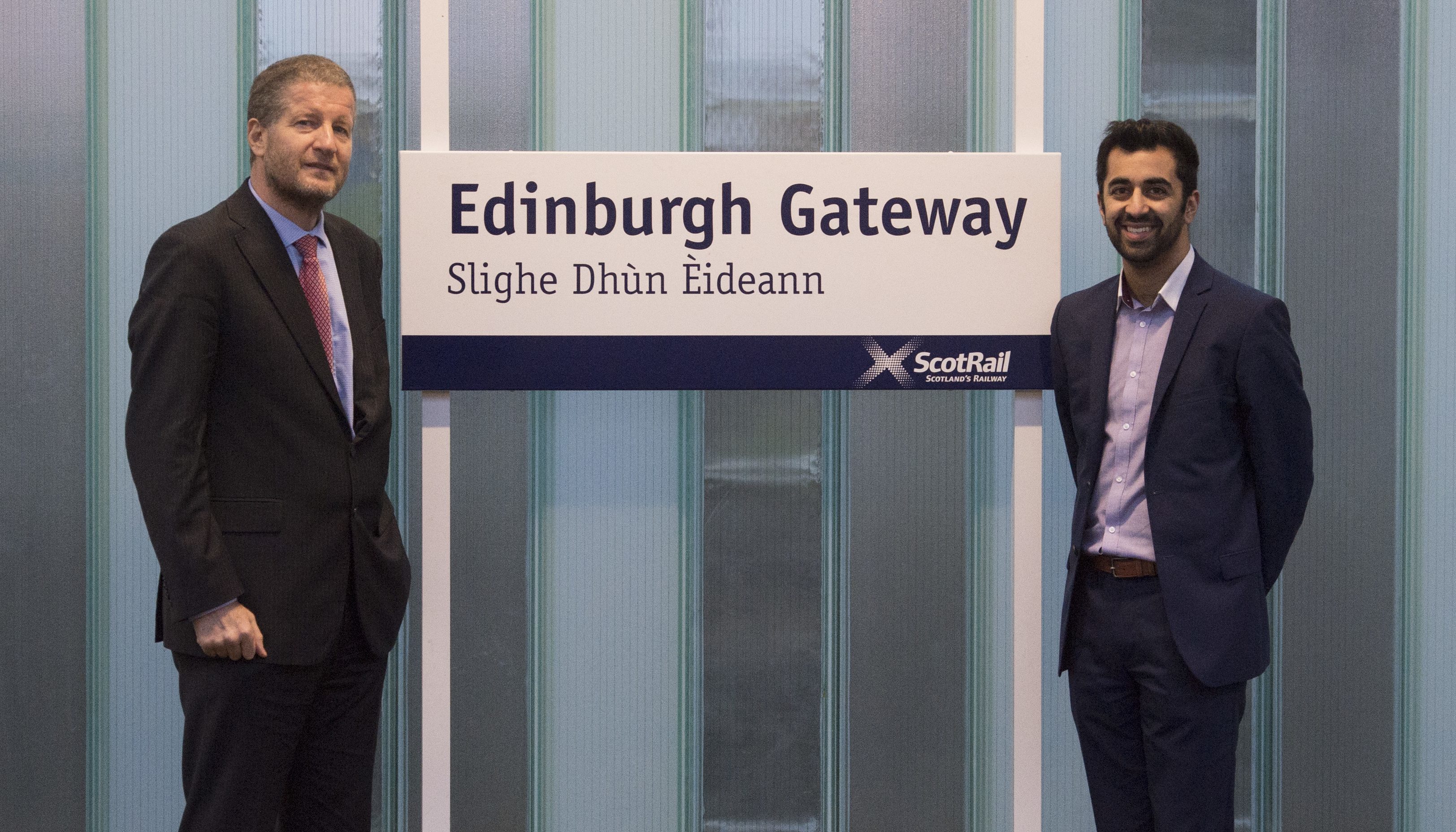
A NEW £41m railway station has been branded a “white elephant” less than a year after it opened – as figures show it was used by barely a third of the expected number of passengers.
Taxpayer-funded Edinburgh Gateway opened on the outskirts of the capital last December but is often deserted because it does not connect to the busiest rail services.
And it has now emerged that construction costs for the station were originally estimated at £24m but soared to £41m by the time it was completed.
Transport chiefs said they expected 500,000 to 600,000 passengers a year to use the station, which lies next to the depot for the city’s controversial £1 billion tram line.
But figures obtained by The Sunday Post show just 134,655 people have used it in its first eight months – putting it on course to fall dramatically short of its target.
The passenger shortfall is being blamed on the decision to drop plans to connect the station to the busy Glasgow-Edinburgh line.
The site was chosen because it is next to the tram line and would have given SNP minsters a cheap way to create an airport rail link.
Last night former transport minister and Lib Dem MSP Tavish Scott blasted the Scottish Government’s transport planning and the £41m cost of the station.
He said: “This is a complete failure of joined-up thinking from the Scottish Government.
“They pulled the plug on the capital city of Scotland having a dedicated airport rail link that the whole country could have used and left us with a white elephant.
“Thousands of Scots from every point on the compass could have used a proper airport station but instead we now have a vastly over-budget station with poor connections which nobody uses.
“And this at a time when the SNP is encouraging more and more use of air travel.”
Scottish Conservative transport spokesman Jamie Greene added: “This appears to be another abject failing of Scottish Government planning. It has overestimated a project which is now being underused, and the Scottish taxpayer has to foot the bill.”
Plans for the Edinburgh Gateway station were first announced by the then Transport Minister Stewart Stevenson in 2007 but the final business case was signed off by his successor Keith Brown, who is now the cabinet secretary for the economy.
The taxpayer also pays for the staff who work at Edinburgh Gateway instead of franchise holder Abellio because running the new station – first mooted in 2007 – was not in the 2014 franchise agreement.
In October last year, two months prior to Edinburgh Gateway opening, The Sunday Post asked Transport Scotland if they still expected 500,000 to 600,000 passengers a year to use the station.
A spokeswoman confirmed that they did and said the figures were derived from modelling carried out in 2013, after plans to build a section of extra track to allow Glasgow trains to stop at Edinburgh Gateway was axed.
But figures released under freedom of information laws show that between December 11 last year and July 22, a total of 134,655 passengers had used the station.
This works out as an average of 4,207 passengers a week, which if extrapolated over 12 months comes to 218,814, which is just over a third of the projected annual total.
John Carson, a civil engineer and former director of maintenance at Network Rail, said: “Predictions of 500,000 or 600,000 passengers per year do not compare well with the reality but that should not come as a surprise to those who knew they were hyped in the first place.”
The Edinburgh Gateway interchange offers travellers’ services to Fife, Perth, Dundee and Inverness.
The station was also built to link in to Edinburgh’s tram line which then takes passengers the short distance to the city’s airport.
Latest figures from the Office of Rail and Road, the independent rail regulator, show that franchise operators across the UK, on average, made £5.46 in fare revenue per journey in 2016/17.
The amount is before any public subsidy and a breakdown per rail franchise is not available for commercial reasons.
If this average fare revenue was applied to the projected 381,186 “missing” passengers for the first year of the Edinburgh Gateway station then this would equate to £2,081,000 a year in lost ticket money.
Transport Scotland said the increase in building costs from £24m in 2014 to £41m “relates to tram infrastructure works, the costs of which fell to the project”.
A Transport Scotland spokeswoman said: “Airport demand is quite seasonal, so this picture of the station’s use cannot be regarded as being representative.
“A full year’s worth of data is required before a view can be come to with respect to market demand for the station.”
The transport body refused to say how many staff are employed at Edinburgh Gateway but did admit they are picking up the bill as the new station sparked a variation of the ScotRail franchise agreement with Abellio.
Meanwhile, plans to run the first electric trains on the flagship Edinburgh to Glasgow line have been hit by a fourth delay, transport chiefs have admitted.
The first services were originally expected in 2016.
This was later put back to July 2017 and another delay, this time to October 2, was announced in June.
After Transport Scotland changed the wording of the start to its electric service to “later this year” The Sunday Post asked if the October 2 date had slipped.
ScotRail then admitted it will be the end of October before the first electric train is due to run on Scotland’s busiest railway line, with a full electric service due by December.

Enjoy the convenience of having The Sunday Post delivered as a digital ePaper straight to your smartphone, tablet or computer.
Subscribe for only £5.49 a month and enjoy all the benefits of the printed paper as a digital replica.
Subscribe